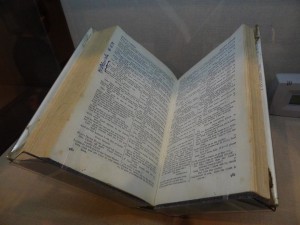 A few weeks ago, I decided to take my three kids up to the Wisconsin State Fair. We’d never been before, and I was looking forward to giving them a chance to experience the things I’d loved at fairs as a kid: creepy rides, barns full of pristine livestock, deep fried everything, cases full of vegetables and handicrafts, and the noisy tones of cover bands playing on the thoroughfare. I was not disappointed, and for my Midwestern city/suburb kids it was an absolutely original experience.
A few weeks ago, I decided to take my three kids up to the Wisconsin State Fair. We’d never been before, and I was looking forward to giving them a chance to experience the things I’d loved at fairs as a kid: creepy rides, barns full of pristine livestock, deep fried everything, cases full of vegetables and handicrafts, and the noisy tones of cover bands playing on the thoroughfare. I was not disappointed, and for my Midwestern city/suburb kids it was an absolutely original experience.
One of my favorite moments was when my son turned to me after a tour through one of the livestock barns and said, “I feel like such a city kid.” This particular child of mine is a delightful person—but also an oldest child and teenager and is therefore a generally self-appointed expert on…everything. But after watching other kids his age grooming animals, cleaning out stalls, giving presentations, and generally preferring Wranglers and dusty boots to joggers and Vans, his world was turned on its side a little. As a parent there is little I like more than watching my kids have experiences that question their worldview a little.
It reminded me of this article I saw last year and (also this one it referred to) about relatability in literature. I was interested in the idea that we place far too much value on how relatable a story is—and that more important than a character’s likeability or relatability is their ability to challenge us and force us to ask the tough questions.
Granted, some of my favorite characters over the years have been those I could empathize with, but the ones that have really changed my life are those not like me at all–the characters experiencing things I knew nothing about, who saw the world differently, who made me see my privilege or want to push myself in new ways. I think it’s stories like this that help us see the humanity in humans we don’t relate to, and that is vital—especially in our current social/political climate. These are the kind of stories I’d like to read and, hopefully, write.



